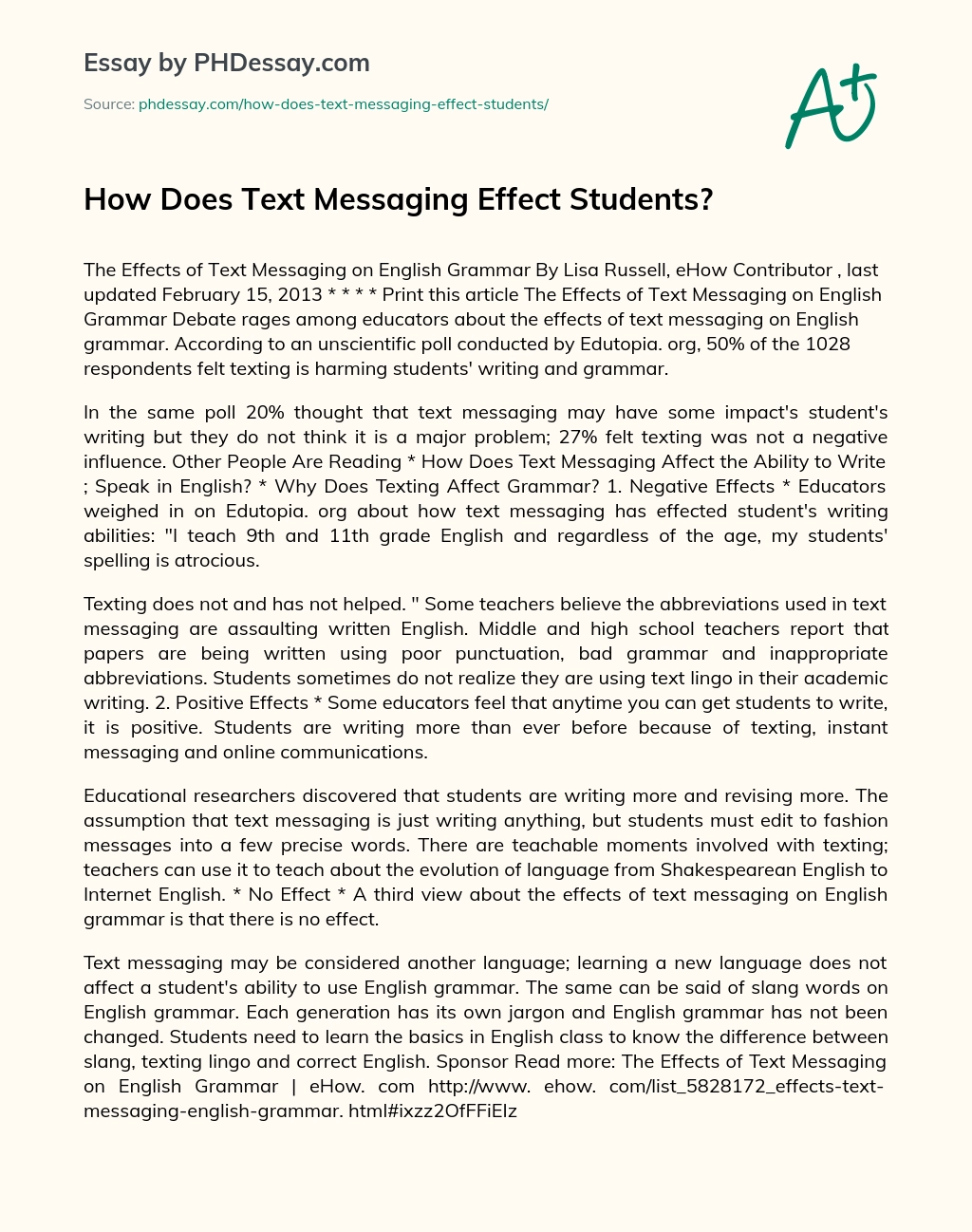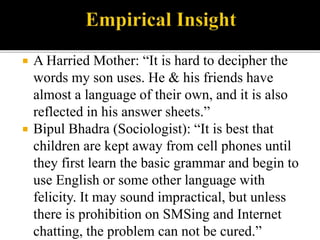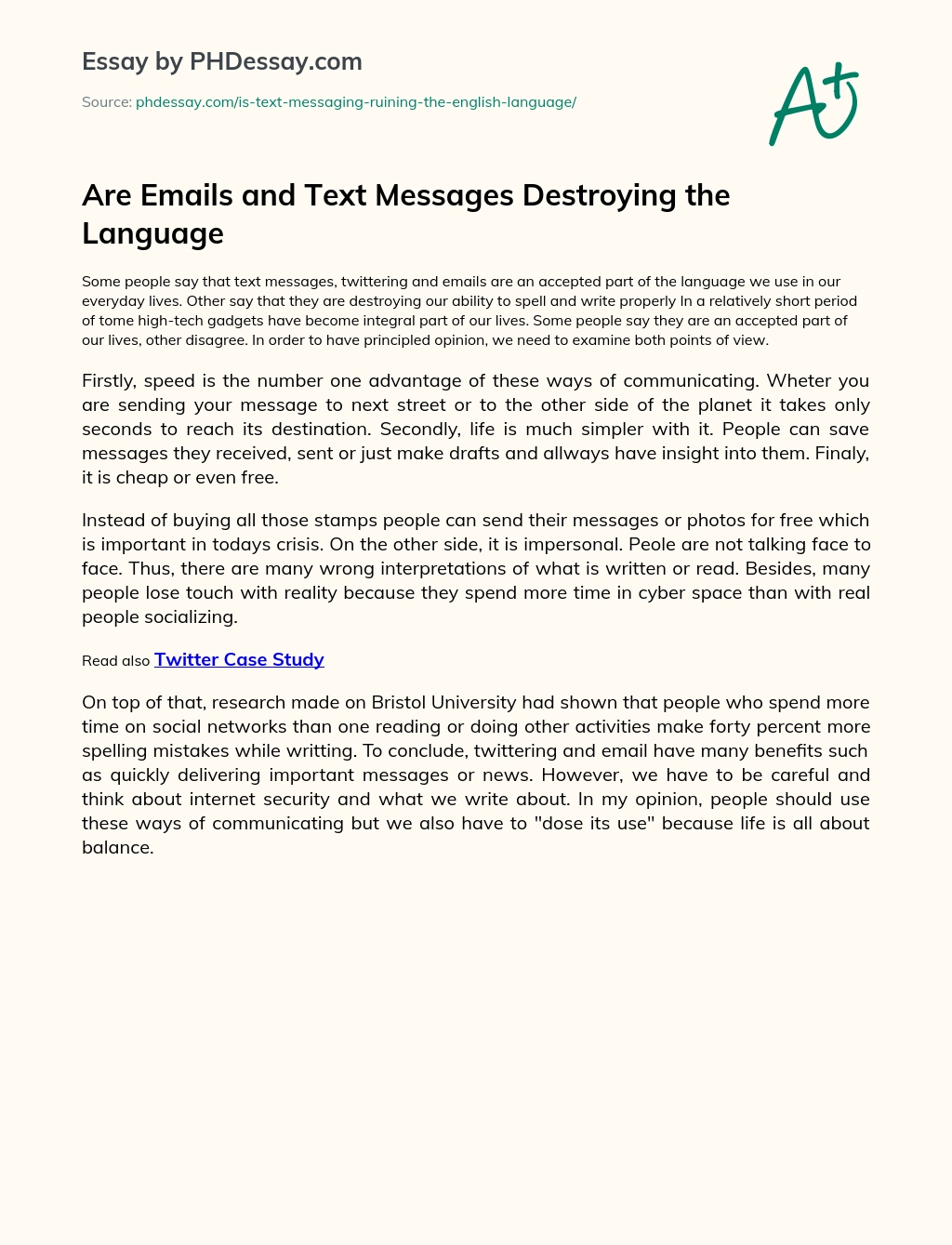Texting, or the practice of sending short messages via a cellular device, has had a significant impact on the English language. While some argue that texting has had a detrimental effect on literacy and language skills, others argue that it has opened up new forms of communication and allowed for greater creativity in language use.
One argument against texting is that it encourages the use of abbreviations, acronyms, and other shortened forms of words, which can be confusing or difficult to understand for those who are not familiar with them. For example, the phrase "LOL" (laugh out loud) is commonly used in texts to indicate that something is funny, but this abbreviation may not be understood by someone who has not encountered it before. Similarly, texts often omit vowels or use numbers to stand in for words (e.g. "gr8" for "great"), which can make them harder to read and understand.
Another concern is that texting may lead to the erosion of proper grammar and spelling. With the limited space and time constraints of texting, it can be tempting to use shortcuts such as leaving out words or using incorrect grammar. This can be especially problematic for younger generations who are still learning language and literacy skills, as they may not be exposed to proper language use in other contexts.
However, it's important to note that texting is just one form of communication and should not be seen as the sole determinant of language skills. Many people are able to effectively use proper grammar and spelling in other forms of writing, and there is no evidence to suggest that texting has had a widespread negative impact on overall literacy levels.
On the other hand, some argue that texting has actually opened up new forms of communication and allowed for greater creativity in language use. Texting allows for quick, casual communication that may not be possible through other forms, such as email or letter writing. It has also allowed for the creation of new words and phrases that can be used to convey meaning or emotion in a more concise way. For example, the use of emojis, which are small icons or symbols used to represent emotions or ideas, has become widespread in texts as a way to convey meaning or add personality to written communication.
In conclusion, while texting has had some impact on the English language, it is important to consider the full range of its effects. While there are valid concerns about the potential negative impact on language skills, it is also important to recognize the ways in which texting has allowed for new forms of communication and creativity in language use. As with any form of communication, it is important to use texting responsibly and to maintain proper language skills in other contexts as well.







